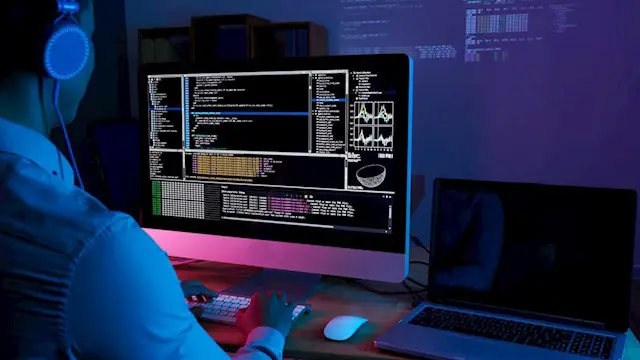
ISTQB Foundation Level Certification 2022 + Sample Questions
Gain Skills of Software Testing and Be a certified ISTQB Software Tester
Neeraj Singh
Summary
- Reed courses certificate of completion - Free
- Tutor is available to students
Add to basket or enquire
Overview
6+ hours of Software Testing concepts/skills to prepare you and help you enhance your profile as a software tester. Also, the course prepares you to Get certified with ISTQB Foundation Level & add quality to your process and build a competitive profile.
Note: This course is the only training of the certification that doesn't include the exam.
Curriculum
Course media
Description
The 2018 Foundation Level Learning objectives are as follows:
Chapter 1 Fundamentals of Testing
1.1 What is Testing?
LO-1.1.1Identify typical objectives of testing (K1)LO-1.1.2Differentiate testing from debugging (K2)
1.2 Why is Testing Necessary?
LO-1.2.1Give examples of why testing is necessary (K2)LO-1.2.2Describe the relationship between testing and quality assurance and give examples of how testing contributes to higher quality (K2)LO-1.2.3Distinguish between error, defect, and failure (K2)LO-1.2.4Distinguish between the root cause of a defect and its effects (K2)
1.3 Seven Testing Principles (K2)
LO-1.3.1Explain the seven principles of testing (K2)
1.4 Test Process
LO-1.4.1Explain the impact of context on the test process (K2)LO-1.4.2Describe the test activities and respective tasks within the test process (K2)LO-1.4.3Differentiate the work products that support the test process (K2)LO-1.4.4Explain the value of maintaining traceability between the test basis and the test work products (K2)
1.5 The Psychology of Testing (K2)
LO-1.5.1Identify the psychological factors that influence the success of testing (K1)LO-1.5.2Explain the difference between the mindset required for test activities and the mindset required for development activities (K2)
Chapter 2 Testing Throughout the Software Development Lifecycle
2.1. Software Development Lifecycle Models
LO-2.1.1Explain the relationships between software development activities and test activities in the software development lifecycle (K2)LO-2.1.2Identify reasons why software development lifecycle models must be adapted to the context of project and product characteristics (K1)LO-2.1.3Recall characteristics of good testing that are applicable to any life cycle model (K1)
2.2 Test Levels (K2)
LO-2.2.1Compare the different test levels from the perspective of objectives, test basis, test objects, typical defects and failures, and approaches and responsibilities (K2)
2.3 Test Types (K2)
LO-2.3.1Compare functional, non-functional and white-box testing (K2)LO-2.3.2Recognize that functional and structural tests occur at any test level (K1)LO-2.3.3Recognize that functional, non-functional and white-box tests occur at any test level (K1)LO-2.3.4Compare the purposes of confirmation testing and regression testing (K2)
2.4 Maintenance Testing (K2)
LO-2.4.1Summarize triggers for maintenance testing (K2)LO-2.4.2Describe the role of impact analysis in maintenance testing (K2)LO-2.4.3Describe the role of impact analysis in maintenance testing (K2)
Chapter 3 Static Testing
3.1 Static Testing Basics
LO-3.1.1Recognize types of software work product that can be examined by the different static testing techniques (K1)LO-3.1.2Use examples to describe the value of static testing (K2)LO-3.1.3Explain the difference between static and dynamic techniques, considering objectives, types of defects to be identified, and the role of these techniques within the software lifecycle (K2)
3.2 Review Process
LO-3.2.1Summarize the activities of the work product review process (K2)LO-3.2.2Recognize the different roles and responsibilities in a formal review (K1)LO-3.2.3Explain the differences between different review types: informal review, walkthrough, technical review and inspection (K2)LO-3.2.4Apply a review technique to a work product to find defects (K3)LO-3.2.5Explain the factors that contribute to a successful review (K2)
Chapter 4 Test Techniques
4.1 Categories of Test Techniques
LO-4.1.1Explain the characteristics, commonalities, and differences between black-box test techniques, white-box test techniques and experience-based test techniques (K2)
4.2 Black-box Test Techniques
LO-4.2.1Apply equivalence partitioning to derive test cases from given requirements (K3)LO-4.2.2Apply boundary value analysis to derive test cases from given requirements (K3)LO-4.2.3Apply decision table testing to derive test cases from given requirements (K3)LO-4.2.4Apply state transition testing to derive test cases from given requirements (K3)LO-4.2.5Explain how to derive test cases from a use case (K2)
4.3 White-box Test Techniques
LO-4.3.1Explain statement coverage (K2)LO-4.3.2Explain decision coverage (K2)LO-4.3.3Explain the value of statement and decision coverage (K2)
4.4 Experience-based Test Techniques
LO-4.4.1Explain error guessing (K2)LO-4.4.2Explain exploratory testing (K2)LO-4.4.3Explain checklist-based testing (K2)
Chapter 5 Test Management
5.1 Test Organization
LO-5.1.1Explain the benefits and drawbacks of independent testing (K2)LO-5.1.2Identify the tasks of a test manager and tester (K1)
5.2 Test Planning and Estimation
LO-5.2.1Summarize the purpose and content of a test plan (K2)LO-5.2.2Differentiate between various test approaches (K2)LO-5.2.3Give examples of potential entry and exit criteria (K2)LO-5.2.4Apply knowledge of prioritization, and technical and logical dependencies, to schedule test execution for a given set of test cases (K3)LO-5.2.5Identify factors that influence the effort related to testing (K1)LO-5.2.6Explain the difference between two estimation techniques: the metrics-based technique and the expert-based technique (K2)
5.3 Test Monitoring and Control
LO-5.3.1Recall metrics used for testing (K1)LO-5.3.2Summarize the purposes, contents, and audiences for test reports (K2)
5.4 Configuration Management
LO-5.4.1Summarize how configuration management supports testing (K2)
5.5 Risks and Testing
LO-5.5.1Define risk level by using likelihood and impact (K1)LO-5.5.2Distinguish between project and product risks (K2)LO-5.5.3Describe, by using examples, how product risk analysis may influence thoroughness and scope of testing (K2)
5.6 Defect Management
LO-5.6.1Write a defect report, covering defects found during testing (K3)
Chapter 6. Tool Support for Testing
6.1 Test tool considerations
LO-6.1.1Classify test tools according to their purpose and the test activities they support (K2)LO-6.1.2Identify benefits and risks of test automation (K1)LO-6.1.3Remember special considerations for test execution and test management tools (K1)
6.2 Test Planning and Estimation (K3)
LO-6.2.1Identify the main principles for selecting a tool (K1)LO-6.2.2Recall the objectives for using pilot projects to introduce tools (K1)LO-6.2.3Identify the success factors for evaluation, implementation, deployment and on-going support of test tools in an organization (K1)
Who is this course for?
- Beginners in testing
- Freshers seeking an opportunity in testing
- Professionals working as manual testers
- Professionals working as automation testers
Requirements
There is no prerequisites for this training anyone can take up this course followed by certification.
Career path
On course completion, you will be able to fulfill the criteria and knowledge required to begin/grow higher in your journey as a Software tester
Questions and answers
is the exam included or can it be for a fee ?
Answer:Hi Lauren, This is just the training. The exam fee will be extra to be paid after training to the board. Regards Neeraj
This was helpful.
Certificates
Reed courses certificate of completion
Digital certificate - Included
Will be downloadable when all lectures have been completed
Reviews
Currently there are no reviews for this course. Be the first to leave a review.
Legal information
This course is advertised on reed.co.uk by the Course Provider, whose terms and conditions apply. Purchases are made directly from the Course Provider, and as such, content and materials are supplied by the Course Provider directly. Reed is acting as agent and not reseller in relation to this course. Reed's only responsibility is to facilitate your payment for the course. It is your responsibility to review and agree to the Course Provider's terms and conditions and satisfy yourself as to the suitability of the course you intend to purchase. Reed will not have any responsibility for the content of the course and/or associated materials.


